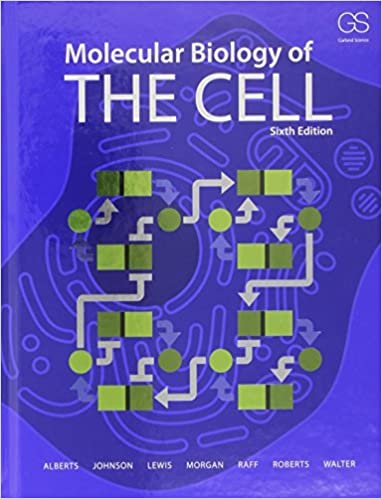
Molecular Biology Of The Cell 6th Edition by Bruce Alberts, Alexander Johnson, Julian Lewis, David Morgan, Martin Raff, Keith Roberts, Peter Walter
Edition 6ISBN: 978-0815345244
Molecular Biology Of The Cell 6th Edition by Bruce Alberts, Alexander Johnson, Julian Lewis, David Morgan, Martin Raff, Keith Roberts, Peter Walter
Edition 6ISBN: 978-0815345244 Exercise 6
Heart muscle gets most of the ATP needed to power its continual contractions through oxidative phosphory- lation. When oxidizing glucose to  heart muscle con- sumes
heart muscle con- sumes  t a rate of
t a rate of  per g of tissue, in order to replace the ATP used in contraction and give a steady- state ATP concentration of
per g of tissue, in order to replace the ATP used in contraction and give a steady- state ATP concentration of  of tissue. At this rate, how many seconds would it take the heart to consume an amount of ATP equal to its steady-state levels? (Com- plete oxidation of one molecule of glucose to
of tissue. At this rate, how many seconds would it take the heart to consume an amount of ATP equal to its steady-state levels? (Com- plete oxidation of one molecule of glucose to  yields 30 ATP, 26 of which are derived by oxidative phosphoryla- tion using the 12 pairs of electrons captured in the electron carriers NADH and
yields 30 ATP, 26 of which are derived by oxidative phosphoryla- tion using the 12 pairs of electrons captured in the electron carriers NADH and 
 heart muscle con- sumes
heart muscle con- sumes  t a rate of
t a rate of  per g of tissue, in order to replace the ATP used in contraction and give a steady- state ATP concentration of
per g of tissue, in order to replace the ATP used in contraction and give a steady- state ATP concentration of  of tissue. At this rate, how many seconds would it take the heart to consume an amount of ATP equal to its steady-state levels? (Com- plete oxidation of one molecule of glucose to
of tissue. At this rate, how many seconds would it take the heart to consume an amount of ATP equal to its steady-state levels? (Com- plete oxidation of one molecule of glucose to  yields 30 ATP, 26 of which are derived by oxidative phosphoryla- tion using the 12 pairs of electrons captured in the electron carriers NADH and
yields 30 ATP, 26 of which are derived by oxidative phosphoryla- tion using the 12 pairs of electrons captured in the electron carriers NADH and 
Explanation
Free ions in any solution (including the...
Molecular Biology Of The Cell 6th Edition by Bruce Alberts, Alexander Johnson, Julian Lewis, David Morgan, Martin Raff, Keith Roberts, Peter Walter
Why don’t you like this exercise?
Other Minimum 8 character and maximum 255 character
Character 255


